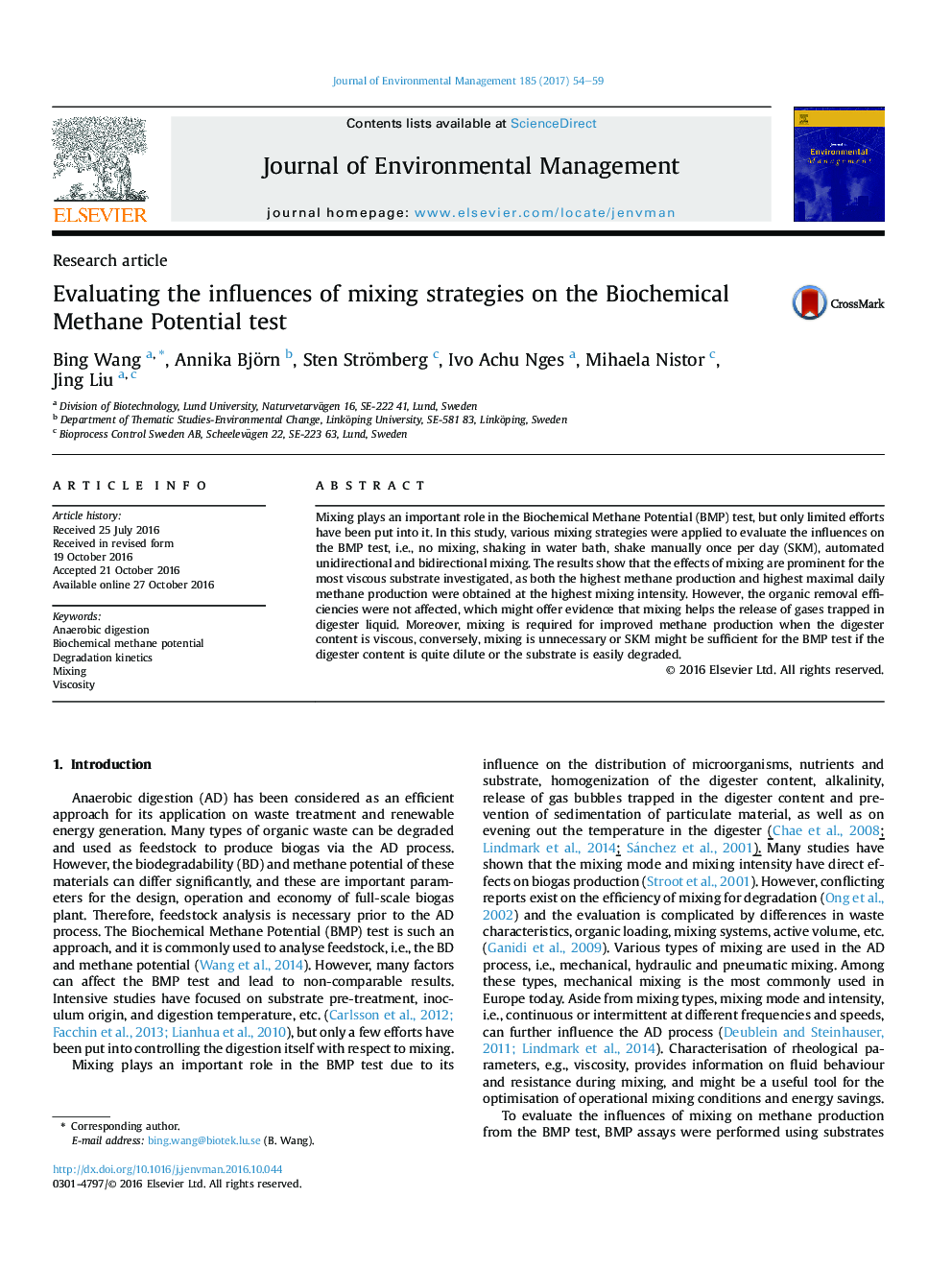| Article ID | Journal | Published Year | Pages | File Type |
|---|---|---|---|---|
| 5117340 | Journal of Environmental Management | 2017 | 6 Pages |
â¢The effects of mixing are prominent for viscous substrate.â¢The organic removal efficiencies among all test samples are not affected by mixing.â¢Mixing might aid in the release of gas bubbles trapped in the liquid.â¢Mixing is unnecessary when the digester content is quite dilute or easily degraded.
Mixing plays an important role in the Biochemical Methane Potential (BMP) test, but only limited efforts have been put into it. In this study, various mixing strategies were applied to evaluate the influences on the BMP test, i.e., no mixing, shaking in water bath, shake manually once per day (SKM), automated unidirectional and bidirectional mixing. The results show that the effects of mixing are prominent for the most viscous substrate investigated, as both the highest methane production and highest maximal daily methane production were obtained at the highest mixing intensity. However, the organic removal efficiencies were not affected, which might offer evidence that mixing helps the release of gases trapped in digester liquid. Moreover, mixing is required for improved methane production when the digester content is viscous, conversely, mixing is unnecessary or SKM might be sufficient for the BMP test if the digester content is quite dilute or the substrate is easily degraded.
